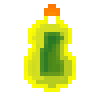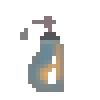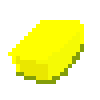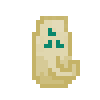●○🏡housekeeping
philosophy
living room
laundry
shower room
toilet+washbasin
misc. resources

SiteOrigin bgrounds







For sanitary reasons and psychological peace, I'd suggest putting a small bottle of decanted dishwashing soap and antiseptic solution near the toilet bowl or sink! This will also make it easy to reach as and when you'd like to give either a quick clean.
If your toilet brush doesn't come with a holding cup where water can drain while being stored, you can use an old plastic container or any old receptacle you don't want anymore. Put next to the toilet, within reach.
Even though technically most toilets are glazed, from time to time they need cleaning to keep them shining and happy.
Toilet bowl: Into the toilet bowl (or urinal, if you have one--this guide doesn't cover how to clean one though! maybe later on), drizzle a combination of antiseptic solution and dishwashing detergent. Pour around onto the sloping areas of your sanitationware and scrub with a toilet brush.
Dip your brush into the centre well of water to help lather your cleaning solution up. Remember to scrub the portions of ceramic covered by the pool of water as well.
Flush, making sure to rinse your brush in the torrent of water flushing out, shake off a bit, and put into its holding container. (You can also pour the aforementioned cleaning mix into the water tank regularly and use the water that comes out straight to wash your bowl.) Enjoy your shiny toilet bowl!
Cistern/The other areas of your toilet: Squirt some antiseptic solution onto a few squares of toilet paper (folded up), and proceed to wipe down:
Like with the toilet bowl, drizzle some dishwashing detergent onto the sides of the washbasin (antiseptic can be added too, but you can leave it out as well). Unlike with the toilet bowl, use a sponge and (if available) the scouring side of the sponge.
(If you'd like, you can also use a scouring cleaning solution/paste, but if you have a scouring or rough-ish sponge, you should be fine.)
Remember to wash/scrub around the drainhole, the overflow hole and the tap itself!
You can now proceed to rinse your sponge and, letting it be soggy, rinse out the soaped areas (or just use plain running water). Squish out some of the water and with your damp sponge, wipe down any nearby countertops or surfaces to clear accumulated dust.
Tah-daaaah! A sink as clean as your teeth after brushing. Remember to give your sponge one last rinse and then leave to dry on a hook+clothespin duo somewhere nearby. (If you place it somewhere high up and where there's lots of air, this will help the sponge dry.)